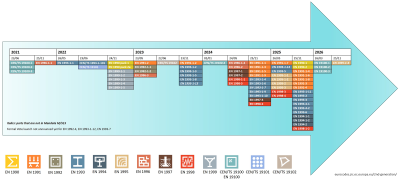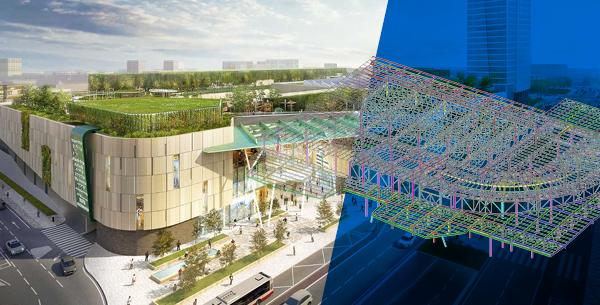The second generation of Eurocodes is currently in its final stages of development and implementation. This update represents a significant evolution in European construction standards, focusing on enhancing ease of use, promoting further harmonization, and improving practical application.

Current Status
The development of the second-generation Eurocodes is nearing completion. The various parts of these updated standards are being finalized between 2023 and 2027, with the complete set expected to be published in 2028. All second-generation Eurocode parts will be distributed to National Standards Bodies no later than March 30, 2026.
Key Changes and Improvements
The second-generation Eurocodes introduce several important updates:
- Enhanced Harmonization: There is a focus on reducing the number of nationally determined parameters, promoting greater consistency across European countries.
- Improved Usability: The new standards aim to be more user-friendly and easier to implement in day-to-day calculations.
- New Assessment Guidelines for Existing Structures: Requirements for the assessment, re-use, and retrofitting of existing structures have been introduced, reflecting the growing importance of sustainability and extending the lifespan of existing buildings
- Strengthened Robustness Requirements: The new standards place greater emphasis on structural robustness to ensure that structures can withstand unforeseen events and prevent disproportionate collapse.
- Expanded Scope: New Eurocodes have been developed for structural glass, and pre-normative work has been advanced for fibre-reinforced polymers (FRP) and membrane structures.
Steel design (Eurocode 3)
In the realm of steel design, the second generation of Eurocodes brings several important changes:
- Stability: Updated guidelines for stability enhance the safety and performance of steel constructions, incorporating the latest research and best practices.
- Materials: Expansion of steel strengths up to S700 in EN 1993-1-1:2022 and up to S960 in EN 1993-1-12.
- Fire Resistance: Revised rules for fire resistance ensure that steel structures meet modern safety standards, with a focus on performance-based design and advanced calculation methods.
- Composite Structures: The codes provide guidance on the use of composite steel with concrete structures, reflecting the increasing use of these materials in modern construction.
Concrete design (Eurocode 2)
Here are the main adaptations for concrete design:
- New Provisions: EN 1992-1-1:2023 includes updated rules for shear, cracking, and anchorage, ensuring more precise and reliable design practices.
- Expanded Scope: The new Eurocode 2 now covers bridges, liquid retaining structures, containment structures, CFRP strengthening, and SFRC concrete within EN 1992-1-1, eliminating the need for separate parts (EN 1992-2 and EN 1992-3).
- Existing Structures: The standard now includes annexes on the assessment and strengthening of existing concrete structures.
Improved Practical Use of Eurocodes

The second-generation Eurocodes have been developed with a strong focus on improving their practical use for day-to-day calculations. These improvements aim to make the standards more user-friendly, efficient, and accessible for engineers and designers.
Streamlined Content and Consistent Terminology: The new Eurocodes have been reorganized to reduce redundancy and improve clarity, making it easier for users to find relevant information quickly. A more uniform terminology has been adopted across all Eurocode parts, reducing confusion and improving understanding.
Simplified Procedures and Updated Design Rules: For common design situations, simplified calculation methods have been introduced, allowing for quicker assessments without compromising safety. The standards now incorporate more economic design rules for certain structural elements, such as semi-compact sections in steel design.
Expanded Explanations and Practical Examples: More comprehensive explanations and background information have been included to help users understand the rationale behind specific rules. Additional worked examples and case studies have been incorporated to illustrate the application of design principles.
Reduced National Annexes: The number of Nationally Determined Parameters (NDPs) has been decreased, promoting greater consistency across countries and simplifying the design process.
Maintenance and Assessment: Improved guidance on the assessment and maintenance of existing structures has been included, supporting the entire lifecycle of buildings and infrastructure.
Conclusion
Overall, the second generation of Eurocodes represents a significant step forward in the standardization of structural design in Europe. By incorporating the latest advancements in engineering and construction practices, these updated codes will help to ensure the safety, serviceability, and durability of structures for years to come.
Watch our webinar
Watch our webinar on the second generation of Eurocodes to see how all these changes are being implemented in SCIA Engineer.
Source: https://eurocodes.jrc.ec.europa.eu/2nd-generation/second-generation-eurocodes-what-new